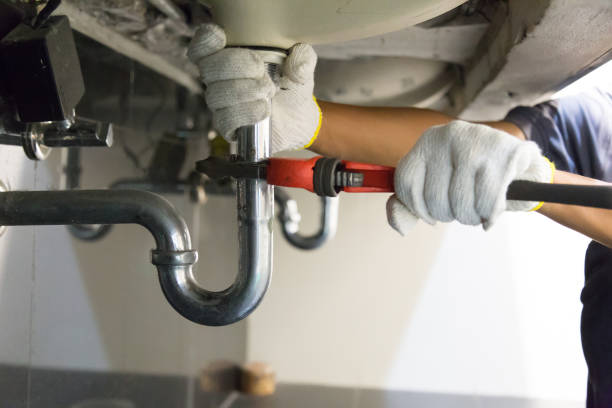Learn how to properly maintain and repair your kitchen sink plumbing system to avoid clogs and save money on plumbing services.
This blog will help you tackle common kitchen sink plumbing problems with ease. We’ll show you how to fix a clogged drain step-by-step and offer tips for preventing future plumbing issues. Don’t be intimidated – with the right tools and knowledge, you can handle most plumbing issues quickly and easily. Let’s get started!
Understanding Your Kitchen Sink Plumbing System
When working on your kitchen sink, it’s important to understand its plumbing system. It includes the sink, drain, P-trap, and water supply lines. The sink is where you clean and wash dishes. The drain is at the bottom of the sink and allows liquids to flow out. The P-trap prevents odors from entering your home. The water supply lines provide hot and cold water under the sink.
Knowing your kitchen sink plumbing system is crucial to fixing any issues that may arise. Simple tasks like clearing a clogged sink or fixing a leaky supply line can save you time and money. With knowledge of the different components of your plumbing system, you can make repairs on your own without calling a plumber.
Identifying Common Kitchen Sink Plumbing Issues
Are you frustrated with the slow water flow in your kitchen sink? It’s time to check your pipes and connections. Common plumbing issues like clogged drains, leaky faucets, and sink leaks can cause these problems. Food debris, grease buildup, and foreign objects can clog the drain, while worn-out washers and faulty valves can cause faucet leaks. If water pools around the sink base, there could be a leak in the sink basin or drain. Identify these issues to fix them yourself or call a plumber for help.
Tools You’ll Need for DIY Plumbing Repairs
As a homeowner, it’s crucial to have the essential tools for DIY plumbing repairs. A pipe wrench is necessary for gripping and turning pipes, while a basin wrench is necessary for tight spaces under the sink. Other important tools include pliers, a hacksaw, a pipe cutter, and Teflon tape. With these tools, you can handle most kitchen sink plumbing repairs independently. However, for more complex repairs, it’s always best to seek the help of a professional plumber.
Step-by-Step Guide to Fixing Clogged Drains
To fix a clogged drain, start by identifying the cause of the clog. Remove the drain cover and inspect the inside with a flashlight. Common causes are hair, soap scum, and food debris. Once you know the cause, you can begin fixing the clog.
To remove a clog in your drain, use a plunger for minor clogs or a drain snake for more stubborn ones. For a plunger, place it over the drain and pump to create suction. For a drain snake, insert it into the drain and twist until it reaches the clog, then use a back-and-forth motion to break it up and remove it. Using these simple steps, you can fix a clogged drain without a professional plumber.
Tips for Preventing Future Plumbing Problems
To prevent plumbing problems, maintain proper waste disposal and regular drain cleaning. Use a drain strainer to catch hair and debris, and avoid pouring grease down the sink, as it can cause blockages. Let it cool and dispose of it in the trash instead.
Regular drain cleaning can prevent plumbing issues. Pouring boiling water down the drain weekly or using a mixture of baking soda and vinegar can break up stubborn clogs and keep drains flowing smoothly. These simple habits can prevent costly plumbing repairs for homeowners.

